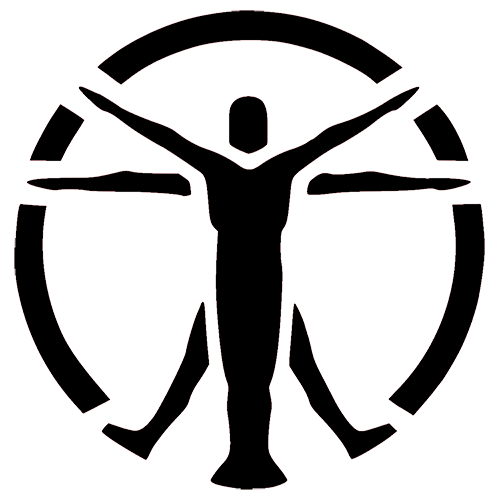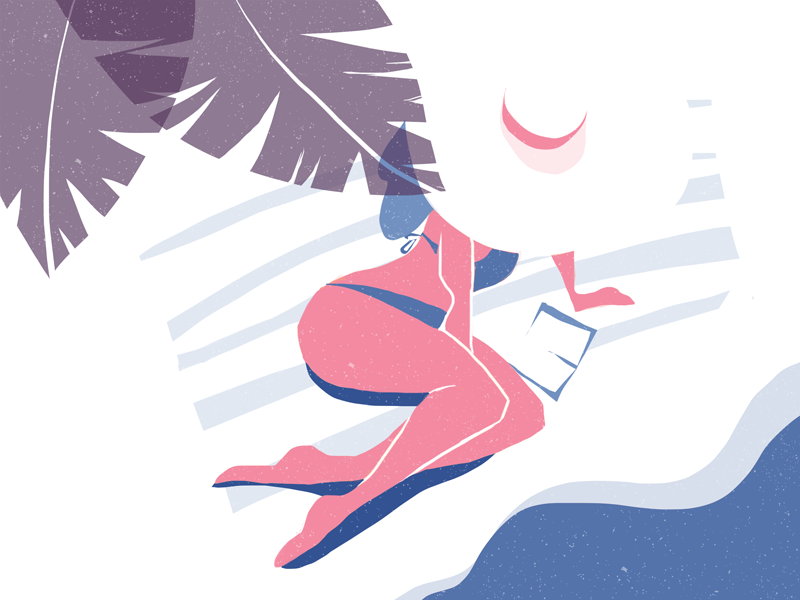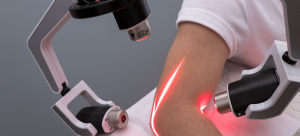People have always noticed that the sun has a noticeable effect on them. But with the advancement of science, humans have not only begun to use the properties of the sun for health benefits but have also learned how to create those benefits regardless of the sun, its diurnal cycles, or the time of year. This article will look at how heliotherapy evolved into phototherapy, what it is for, and how it is used now.
What is heliotherapy
Heliotherapy (“helio” in Greek means “sun”) is a type of phototherapy therapeutic effect of which is realized by using natural sunlight or artificial wavelengths of light to treat various skin diseases and psychological disorders.
Scientists have investigated that the reason for the sun’s beneficial effects is mainly due to the effect of ultraviolet radiation.
Ultraviolet rays are part of the spectrum of solar radiation that reaches the Earth’s surface along with visible light and infrared rays. The fraction of ultraviolet rays in the solar spectrum is about 10%.
The UV spectrum is divided into three wavelength ranges with different effects on the skin:
When passing through the atmosphere, all the UVC-rays and most of the UVB rays are absorbed and only all the UVA and a small part of the UVB radiation reaches the surface.

History of heliotherapy
Since ancient times, people have noticed that some skin conditions improved in summer and worsened in the cold season. Therefore, even the most ancient schools of medicine knew about the healing power of sunlight. Data from many parts of the world show that heliotherapy was actively used to treat various diseases.
At that time, the negative effects of the sun were not known until the discovery of ultraviolet in 1801. And the discovery in the second half of the 19th century of the antimicrobial action of ultraviolet radiation transformed the practice of heliotherapy into clinical phototherapy [1, 2, 3].
By this time, lamps emitting light from quartz, mercury vapor, and other sources were created and used to treat acne, psoriasis, syphilis, leprosy, pellagra, and other diseases [1, 4, 5].
At the end of the 19th century, Niels Reiberg Finsen began using filtered sunlight for treatment. Finsen suffered from poor health and limited ability to work, which led him to consider sunbathing as a means that could help him treat his illness and restore some of his limited energy. After making some observations on animals and himself, the scientist developed heliotherapy to treat two skin diseases: smallpox and tuberculosis of the skin. In 1903 Finzen was awarded the Nobel Prize for his pioneering research and therapeutic advances in light therapy [5, 6].
Thus, heliotherapy was one of the first successful therapeutic interventions for patients with tuberculosis, especially skin tuberculosis. Although antibiotics are now used for tuberculosis, heliotherapy remains an important tool in modern medical therapy, but for other indications.

Applications of heliotherapy
At present, heliotherapy is used primarily for dermatological diseases and mood disorders. However, there are many more conditions for which the therapy is highly effective [7-11].
Psoriasis
One study conducted on 373 patients showed that 4 weeks of outdoor heliotherapy contributed to a significant disappearance of psoriatic symptoms in 84% of patients [7]. In addition to this study, there have been several other similar studies that have also confirmed the effectiveness of ultraviolet light in treating psoriasis [7, 10, 12, 13].
Atopic dermatitis
Phototherapy is the optimal second-line treatment for atopic dermatitis (AD). It can be used as monotherapy or in combination with drugs of systemic action, in particular corticosteroids. The effectiveness of phototherapy (including all forms) for AD has been established in adults and children, as well as in acute (UVA1) and chronic (NB-UVB) cases [14].
Vitiligo
According to the American Vitiligo Research Foundation, using psoralen with a UV lamp to treat vitiligo gives up to 85% efficacy in more than 70% of patients. This treatment is also called PUVA, psoralen plus the use of a UV lamp to treat vitiligo [15].
Other skin conditions.
Narrow-band UVB from 311 to 313 nanometers may be effective in treating polymorphic light rash, cutaneous T-cell lymphoma, and red squamous lichen [16, 17].
Among the psychiatric disorders for which heliotherapy has been used to treat are such as:
Seasonal Affective Disorder (SAD)
Studies show that light therapy helps reduce debilitating and depressive behaviors in SAD, such as excessive sleepiness and fatigue, with results lasting at least 1 month. Light therapy is preferred over antidepressants in the treatment of SAD because it is relatively safe and easy to administer; light therapy can be combined with pharmacological therapy [18].
But a 2019 review of studies state that the evidence for light therapy as a preventive treatment for people with a history of SAD is limited, although the risk of side effects is minimal. Thus, the decision to use light therapy should be based on the patient’s treatment preferences [19].
Non-seasonal depression
Light therapy has also been proposed for the treatment of non-seasonal depression and other psychiatric mood disorders, including major depressive disorder [20, 21], bipolar disorder, and postpartum depression [22, 23].
A Cochrane Collaboration meta-analysis concluded that “for patients with non-seasonal depression, light therapy has moderate but promising antidepressant efficacy.” [21]
Light therapy is used to treat disorders in which a person has inconsistent sleep cycles due to:
- Jet lag (due to long commutes)
- Sleep disturbance
- Night work
- Dementia

Why does phototherapy work
Exposure of microorganisms to sunlight can kill potentially harmful bacteria. This mechanism is believed to be involved in the therapy of acne and cutaneous tuberculosis.
The beneficial effects of sunlight on psoriasis appear to result from the suppression of inflammatory skin reactions mediated by the immune system [7, 9, 10].
Numerous studies, experiments, experience in using emitters of different spectra have led to the conclusion that the rays of the middle range (UVB) and of them — with a wavelength of 311 nm — have the greatest effectiveness for some skin diseases. The efficacy rate reaches 0.8 for some pathologies. This means that 8 out of 10 patients achieve significant improvement after treatment with 311 nm UVB, and if used correctly, these rays do not cause many side effects.
Shortwave UVB and longer wavelength UVA cause the production of vitamin D and other chemicals that protect skin cells. This is used for a variety of conditions where vitamin D is not absorbed effectively. For example, for patients with cystic fibrosis (CF), fat malabsorption syndrome, Crohn’s disease [24, 25].
The efficacy of light therapy for the treatment of SAD may be because light therapy compensates for the loss of sunlight and resets the body’s internal clock [26].
Phototherapy affects brain chemicals related to mood and sleep. Exposure to sunlight leads to the release of endorphins, which contributes to feelings of happiness. For this reason, it is used in the treatment of mood disorders occurring at certain times of the year, especially those associated with a lack of natural light (mostly fall or winter) [27].
The use of phototherapy for psychopathology includes few side effects. If they are already using medications, especially antidepressants, or they are undergoing psychological therapy, using this technique can help increase the effectiveness of these treatments by allowing a smaller dose of medication to be used. It is also used in pregnant or nursing women who cannot use psychotropic medications.
About the light therapy procedure
Light therapy is given to both outpatients and inpatients, although the optimal light dose and time of day require individual adjustment.
Essentially, phototherapy involves exposing the patient to a device such as a phototherapy lamp or sunbathing so that the light falls on the patient’s skin and activates biochemical processes. The light from a phototherapy lamp is very similar to natural light.
Skin light therapy treatments usually involve exposure to ultraviolet light. Exposure may be to a small area of the skin or the entire surface of the body, as in a tanning bed. Whole-body phototherapy can be performed in the doctor’s office or at home using a large, powerful UV light booth [28].
During phototherapy to treat depression, the person sits or works in front of a specialized lamp. One of the biological underpinnings of depression has to do with a lack of light and altered sleep cycles, so getting this light through the eyes, helps regulate sleep cycles as it helps the brain self-regulate.
To be effective, the light from the lamp must enter the eyes indirectly, as well as pass through the skin. But be careful! Do not look directly at the lamp, as you can damage your eyes. In addition to reading the manufacturer’s instructions, you should follow the recommendations of the doctor who recommended it.
Phototherapy is not a treatment that automatically causes improvement. It takes time and persistence, just like any other treatment. Don’t expect tangible improvements in one session.

Possible Dangers
Although the use of phototherapy may seem harmless, physicians and scientists emphasize that heliotherapy should be used with caution, given that prolonged exposure of the skin to sunlight increases the chance of developing skin cancer [29].
In phototherapy, the ultraviolet light used needs to be filtered because otherwise, it can damage the skin and eyes.
But filters do not fully protect against negative effects. Therefore, you should be especially careful with this type of device. If not properly controlled, there is a risk of skin problems such as blemishes, melanoma, and burns. Therefore, it is important to see a dermatologist before and during the use of the therapy, even if you use it when you have a mood disorder.
Side effects can be controlled by shortening the treatment time, moving a little away from the lamp, taking breaks during long sessions, or changing the time of day when it is used. It is also possible that they appear immediately after starting therapy, but they diminish as they progress.
Precautions
Precautions should be taken when using ultraviolet radiation, other than trusting the professional judgment of the doctor, psychologist, or psychiatrist who recommended it.
Some considerations to keep in mind:
Contraindications for phototherapy
Other forms of receiving radiation
1. Infrared radiation lamp
Used as heat therapy with an infrared chamber. It is not visible light, it just gives off heat and is not used for mood disorders but skin problems.
2. Laser
This is a special artificial light consisting of light amplification through a process of stimulated emission of radiation. It is regarded as a phototherapy technique, although it is not applied in the field of psychological disorders, and its application in skin diseases is very specific.
It requires light and a chemical compound, which can be liquid, solid, or gaseous. Light stimulates the chemical, increasing its energy. There are two types of lasers for medical purposes: soft and hard.
Soft, with 10-20 mW (milliwatts) of radiation, is used to clean the skin and has an analgesic, anti-inflammatory, and tissue regenerative effect.
Solid has more than 10 watts (watt) of radiation and its use is quite powerful. It can cause cells to vaporize, clot photos, or even explode cells. It can be used to cut tissue (laser scalpel), photocoagulation for retinal detachment, or removal of tattoos and blemishes. It can have pathogenic effects and is contraindicated in pregnant women and people with cancer.
3. Solariums
When talking about phototherapy lamps, you may think that they resemble the tanning beds used for tanning. Tanning beds, however, emit mostly UVA light, and only 4% to 10% of a tanning bed’s light is in the UVB spectrum. They have not been proven to help alleviate symptoms of seasonal affective disorder, except that they release UVA light, which can damage the skin and increase the risk of developing skin cancer.

Summary
In the second half of the nineteenth century, the practice of heliotherapy was transformed into clinical phototherapy, and today it is used to treat many diseases. Studies have proven its particular effectiveness in treating psoriasis and eczema, a seasonal affective disorder with depressed mood, vitamin D deficiency, as well as rickets, and even childhood developmental disabilities.
Light therapy is indicated for both outpatients and inpatients, although the optimal dose of light and time of day require individual adjustment.
The use of phototherapy may seem harmless, but doctors and scientists emphasize that it should be used with caution. A physician should be consulted before starting therapy, and precautions should be taken when using ultraviolet light.
FAQ
🔬 What is phototherapy (heliotherapy) effective for?
In medicine, phototherapy is mainly used to treat skin conditions such as psoriasis or eczema. As for psychology and psychiatry, it has been found useful for treating mood disorders, especially seasonal affective disorders.
💡 What spectrum of rays is used to treat skin conditions?
Numerous studies of different spectra have led to the conclusion that it is the medium-range (UVB) and 311nm amongst them that is most effective for certain skin conditions.
⏳ What is the duration of phototherapy for psoriasis?
At an intensity of 10 000 lux phototherapy sessions of 20 to 30 minutes are usually required. If the intensity of the lamp is lower, for example, 2500 lux, longer sessions may be required.
🕓 What time of the day is better for phototherapy?
For most people phototherapy is effective if done early in the morning, right after waking up. Although some people may benefit from sessions at other times of the day. For this purpose, it is necessary to consult with a doctor to make a schedule most suitable for your particular case.
❗ Are there any contraindications to phototherapy?
Yes, contraindications to phototherapy are:
– A history of melanoma or skin cancer
– Skin diseases with a risk of developing neoplasms (xeroderma pigmentosa, Bloom’s syndrome, familial dysplastic nevus syndrome)
– Diseases that are exacerbated by exposure to ultraviolet light (lupus erythematosus, autoimmune thyroiditis)
– Tuberculosis.
📅 When is the best time to start phototherapy for seasonal diseases?
Usually, therapy begins in early fall when in many regions of the world it gets cloudy and rainy. Because of the lack of sunlight appears disorder. As a rule, the treatment continues until spring, when there is already more light outside, and this is enough to maintain a good mood and energy level.
Sources
- R. Roelandts The history of phototherapy: Something new under the sun? J. Am. Acad. Dermatol., 46 (2002), pp. 926-930
- J.S. Alpert Sunshine: Clinical friend or foe Am. J. Med., 123 (2010), pp. 291-292
- T.A. Palm The Geographical Distribution and Aetiology of Rickets The Practitioner (October–November, 1890)
- R. Hammond Heliotherapy (of Rollier) as an adjunct in the treatment of bone disease J. Bone Joint Surg. Am., S2–11 (1913), pp. 269-275
- Alpert JS. The Jeremiah Metzger Lecture: Jeremiah Metzger and the Era of Heliotherapy. Trans Am Clin Climatol Assoc. 2015;126:219-26. PMID: 26330679; PMCID: PMC4530709.
- Lomholt S, Niels R. Finsen. Nordisk Forlag, Copenhagen: Gyldendalske Boghandel; 1943.
- Snellman E, Lauharanta J, Reunanen A, et al. Effect of heliotherapy on skin and joint symptoms in psoriasis: a 6-month follow-up study. Br J Dermatol. 1993;128:172–7.
- Snellman E, Maljanen J, Aromaa A, et al. Effect of heliotherapy on the cost of psoriasis. Br J Dermatol. 1998;138:288–92.
- Giryes H, Sukenik, Halevy S. Clearing of psoriatic erythroderma following heliotherapy in the Dead Sea area. J Eur Acad Dermatol Venereol. 1995;5:44–6.
- Snellman E, Aromaa A, Jansen CT, et al. Supervised four-week heliotherapy alleviates the long-term course of psoriasis. Acta Derm Venereol. 1993;73:388–92.
- Terman M, Terman JS. Light therapy for seasonal and non-seasonal depression: efficacy, protocol, safety, and side effects. CNS Spectr. 2005;10:647–63.
- Radack KP, Farhangian ME, Anderson KL, Feldman SR. A review of the use of tanning beds as a dermatological treatment. Dermatol Ther (Heidelb). 2015 Mar;5(1):37-51. doi: 10.1007/s13555-015-0071-8. Epub 2015 Mar 4. PMID: 25735439; PMCID: PMC4374067.
- Textbook of Natural Medicine (Fifth Edition) 2020, Pages 1757-1766.e3
- Patrizi A, Raone B, Ravaioli GM. Management of atopic dermatitis: safety and efficacy of phototherapy. Clin Cosmet Investig Dermatol. 2015 Oct 5;8:511-20. doi: 10.2147/CCID.S87987. PMID: 26491366; PMCID: PMC4599569.
- Bae JM, Jung HM, Hong BY, Lee JH, Choi WJ, Lee JH, Kim GM. Phototherapy for Vitiligo: A Systematic Review and Meta-analysis. JAMA Dermatol. 2017 Jul 1;153(7):666-674. doi: 10.1001/jamadermatol.2017.0002. PMID: 28355423; PMCID: PMC5817459.
- Baron ED, Stevens SR. Phototherapy for cutaneous T-cell lymphoma. Dermatol Ther. 2003;16(4):303-10. doi: 10.1111/j.1396-0296.2003.01642.x. PMID: 14686973.
- Bandow, Grace D.; Koo, John Y. M. (August 2004). “Narrow-band ultraviolet B radiation: a review of the current literature”. International Journal of Dermatology. 43 (8): 555–561.
- Sanassi LA. Seasonal affective disorder: is there light at the end of the tunnel? JAAPA. 2014 Feb;27(2):18-22;quiz 23. doi: 10.1097/01.JAA.0000442698.03223.f3. PMID: 24394440.
- Nussbaumer-Streit B, Forneris CA, Morgan LC, Van Noord MG, Gaynes BN, Greenblatt A, Wipplinger J, Lux LJ, Winkler D, Gartlehner G. Light therapy for preventing seasonal affective disorder. Cochrane Database Syst Rev. 2019 Mar 18;3(3): CD011269. doi: 10.1002/14651858.CD011269.pub3. PMID: 30883670; PMCID: PMC6422319.
- Benedetti, Francesco; Colombo, Cristina; Pontiggia, Adriana; Bernasconi, Alessandro; Florita, Marcello; Smeraldi, Enrico (June 2003). “Morning light treatment hastens the antidepressant effect of citalopram: a placebo-controlled trial”. The Journal of Clinical Psychiatry. 64 (6): 648–53.
- Tuunainen, Arja; Kripke, Daniel F; Endo, Takuro (2004-04-19). “Light therapy for non‐seasonal depression”. The Cochrane Database of Systematic Reviews. 2004 (2): CD004050
- Prasko J (November 2008). “Bright light therapy”. Neuro Endocrinol. Lett. 29 Suppl 1: 33–64.
- Terman M. Evolving applications of light therapy. Sleep Med Rev. 2007 Dec;11(6):497-507. doi: 10.1016/j.smrv.2007.06.003. Epub 2007 Oct 25. PMID: 17964200.
- Leichtmann GA, Bengoa JM, Bolt MJ, Sitrin MD. Intestinal absorption of cholecalciferol and 25-hydroxycholecalciferol in patients with both Crohn’s disease and intestinal resection. Am J Clin Nutr. 1991 Sep;54(3):548-52. doi: 10.1093/ajcn/54.3.548. PMID: 1652198.
- Aris RM, Merkel PA, Bachrach LK, Borowitz DS, Boyle MP, Elkin SL, Guise TA, Hardin DS, Haworth CS, Holick MF, Joseph PM, O’Brien K, Tullis E, Watts NB, White TB. Guide to bone health and disease in cystic fibrosis. J Clin Endocrinol Metab. 2005 Mar;90(3):1888-96. doi: 10.1210/jc.2004-1629. Epub 2004 Dec 21. PMID: 15613415.
- “Light Therapy – Topic Overview”. WebMD. 30 June 2009. Retrieved 11 July 2012.
- Terman M, Terman JS. Light therapy for seasonal and nonseasonal depression: efficacy, protocol, safety, and side effects. CNS Spectr. 2005 Aug;10(8):647-63; quiz 672. doi: 10.1017/s1092852900019611. PMID: 16041296.
- “Treating psoriasis: light therapy and phototherapy – National Psoriasis Foundation”. Psoriasis.org. 2014-02-14. Retrieved 2014-02-18.
- Albert MR, Ostheimer KG. The evolution of current medical and popular attitudes toward ultraviolet light exposure: part 2. J Am Acad Dermatol. 2003 Jun;48(6):909-18. doi: 10.1067/mjd.2003.272. PMID: 12789184.





